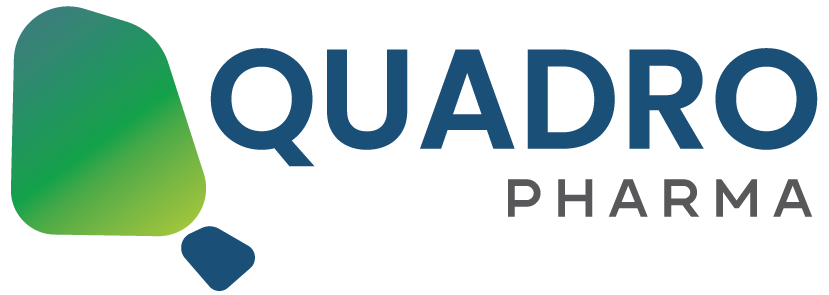The global pharmaceutical market is expected to undergo significant changes by 2027, with particular therapy classes witnessing remarkable growth in spending. Several key factors, including advancements in medical technology, an aging population, and the increasing prevalence of chronic diseases, are driving this trend. Here’s an in-depth look at the top therapy classes by global market spending forecast for 2027:
Oncology
Leading the Charge
Oncology is anticipated to be the leading therapy class in terms of global spending by 2027, with an estimated expenditure of around $377 billion. The increase in cancer incidence worldwide, coupled with significant advancements in cancer treatment options, such as targeted therapies, immunotherapies, and personalized medicine, are major contributors to this growth. Pharmaceutical companies are investing heavily in research and development (R&D) to bring new and more effective cancer treatments to market, driving up overall spending in this sector.
Key Drivers
- Advancements in Treatment: Innovations in precision medicine and immunotherapy are transforming cancer treatment, making therapies more effective and specific to individual patient needs.
- Aging Population: As the global population ages, the incidence of cancer is rising, leading to increased demand for oncology treatments.
- Early Detection: Improvements in diagnostic technologies are allowing for earlier detection of cancers, thereby expanding the treatment population.
Immunology
Expanding Horizons
Immunology is another therapy class expected to see substantial growth, with spending projected to reach significant levels due to the increasing prevalence of autoimmune and inflammatory diseases. Conditions such as rheumatoid arthritis, psoriasis, and inflammatory bowel disease are becoming more common, necessitating ongoing and advanced treatments.
Key Drivers
- Rising Prevalence of Autoimmune Diseases: The growing incidence of diseases like rheumatoid arthritis and lupus is driving the need for more effective immunological therapies.
- Biologic Drugs: The development and adoption of biologic drugs, which are highly effective but also expensive, are a significant factor in the rising costs.
- Innovation: Continuous R&D efforts are leading to the development of novel therapies that provide better outcomes for patients with chronic autoimmune conditions.
Diabetes
Persistent Challenge
Diabetes treatments are forecasted to remain a major area of expenditure, reflecting the global increase in diabetes prevalence. With an estimated surge in spending, the focus will be on both Type 1 and Type 2 diabetes therapies, including insulin, oral medications, and innovative treatments aimed at better glucose management and complication prevention.
Key Drivers
- Global Epidemic: The rising incidence of diabetes, particularly Type 2 diabetes, due to lifestyle factors and aging populations is a primary driver of increased spending.
- Technological Advancements: Innovations such as continuous glucose monitoring systems and advanced insulin delivery methods are improving diabetes management but also contributing to higher costs.
- Chronic Nature of the Disease: Diabetes requires lifelong management, ensuring sustained demand for treatments.
Neurology
Innovative Treatments
Neurology is expected to be another significant area of spending by 2027, driven by advancements in the treatment of neurological disorders such as Alzheimer’s disease, Parkinson’s disease, multiple sclerosis, and epilepsy. With the advent of new therapies and a growing patient population, spending in this sector is set to rise.
Key Drivers
- Aging Population: The prevalence of neurodegenerative diseases increases with age, leading to higher demand for neurological treatments.
- R&D in Neurotherapeutics: Significant investments in research are yielding new treatments that improve patient outcomes and quality of life.
- Unmet Medical Needs: There remains a high unmet need in the treatment of many neurological disorders, driving ongoing investment and development in this field.
Cardiovascular
Sustained Importance
Cardiovascular diseases continue to be a leading cause of morbidity and mortality worldwide, ensuring that this therapy class remains a top priority in terms of global spending. Treatments for conditions such as hypertension, hyperlipidemia, and heart failure are essential components of cardiovascular care.
Key Drivers
- Chronic Nature: Cardiovascular diseases often require long-term or lifelong treatment, contributing to sustained high spending.
- Innovation in Treatment: Advances in drug therapies, medical devices, and surgical techniques are improving outcomes but also increasing costs.
- Preventive Measures: There is a growing focus on preventive cardiology, including the use of statins and antihypertensive medications, which contributes to overall spending.
Respiratory
Growing Concerns
Respiratory diseases, including asthma and chronic obstructive pulmonary disease (COPD), are significant contributors to global health expenditure. Innovations in inhaler technologies and biologic treatments are expected to drive spending in this area.
Key Drivers
- Prevalence of Respiratory Conditions: The high prevalence of chronic respiratory diseases necessitates continuous and advanced treatments.
- Biologics: The introduction of biologic therapies for severe asthma and other respiratory conditions is a key factor in rising costs.
- Air Pollution: Increasing air pollution levels globally are contributing to the rise in respiratory diseases, thus boosting the demand for effective treatments.
Rare Diseases
Niche but Expensive
Rare diseases, while individually uncommon, collectively represent a significant market. Treatments for rare diseases, often referred to as orphan drugs, are typically very expensive due to the small patient populations and high R&D costs.
Key Drivers
- High Cost of Orphan Drugs: Orphan drugs are often priced very high due to the specialized nature of their development and small patient populations.
- Regulatory Incentives: Many governments provide incentives for the development of orphan drugs, encouraging pharmaceutical companies to invest in this area.
- Unmet Needs: There is a significant unmet need for effective treatments for many rare diseases, driving ongoing investment and innovation.
Conclusion The global pharmaceutical market is poised for substantial growth across various therapy classes by 2027. Oncology, immunology, diabetes, neurology, cardiovascular, respiratory, and rare diseases are expected to lead in terms of spending. Key drivers include advancements in medical technology, rising prevalence of chronic diseases, aging populations, and ongoing R&D efforts. As the healthcare landscape evolves, these therapy classes will continue to attract significant investment, aiming to improve patient outcomes and address unmet medical needs.




